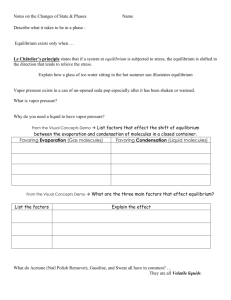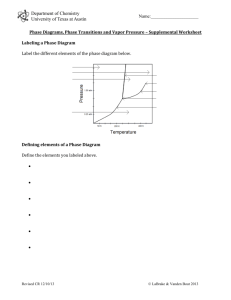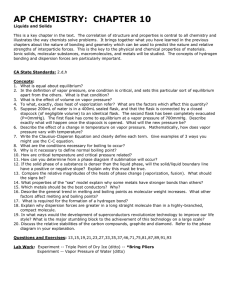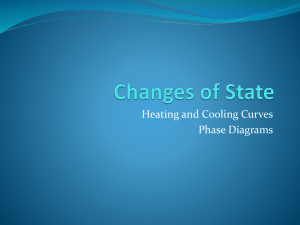Changes of State - Madison Public Schools
advertisement
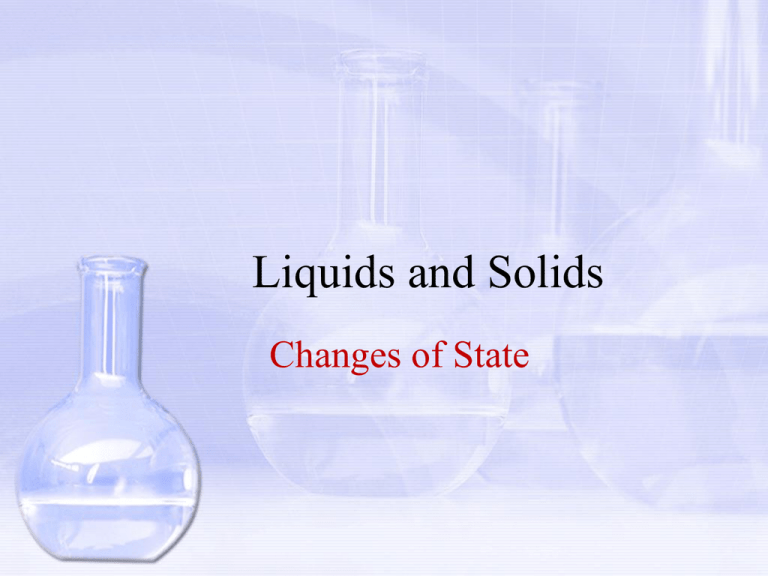
Liquids and Solids Changes of State Objectives 1. Explain the relationship between equilibrium and changes of state 2. Define Le Chatelier’s Principle. 3. Predict changes in equilibrium using Le Chatelier’s Principle. Dry Ice Balloon Explosion (Very Loud Bang) YouTube Equilibrium Equilibrium – a dynamic state in which two opposing changes occur at equal rates in a closed system. Changes of State solid liquid melting solid gas sublimation liquid solid freezing liquid gas vaporization gas liquid condensation gas solid deposition An Equilibrium Equation • Evaporation of a liquid Liquid + energy vapor • Condensation of a liquid Vapor liquid + energy • Liquid-vapor equilibrium liquid + energy vapor Le Chatelier’s Principle A system at equilibrium will shift to offset a stress or change in conditions imposed on the system. Equilibrium and Temperature liquid + energy vapor Change Shift in Equilibrium Increase in temperature Decrease in temperature Right left Equilibrium and Concentration liquid + energy Change Addition of liquid Removal of liquid Addition of vapor Removal of vapor Decrease in container volume Increase in container volume vapor Shift in Equilbrium Right Left Left Right Left right Equilibrium Vapor Pressure • Pressure exerted by a vapor in equilibrium with its corresponding liquid at a given temperature -an increase in temperature causes an increase in equilibrium vapor pressure; result of increased K.E. of the liquid particles. Volatile and Non-volatile liquids • Volatile Liquid – a liquid that readily evaporates at room temp.; liquids with low intermolecular forces. Boiling Boiling… …occurs when the equilibrium vapor pressure of a liquid equals the atmospheric pressure …conversion of a liquid to a vapor within the liquid as well as at the surface. Normal Boiling Point: boiling point at standard atmospheric pressure (100oC for water) Boiling Energy and Boiling Molar Heat of Vaporization • The amount of energy needed to vaporize 1 mole of a liquid at its boiling point Freezing and Melting Freezing: Liquid solid + heat energy Melting: Solid + heat energy liquid Normal freezing point: temperature at which a solid and liquid are at equilbrium at standard pressure (0oC for water Molar Heat of Fusion – energy required to melt one mole of a solid at its melting point. Phase Diagram Triple Point – temperature and pressure conditions at which the solid, liquid, and gas phases of a substance can coexist at equilibrium Critical temperature - temperature above which a substance cannot exist in the liquid phase. Critical pressure – the lowest pressure at which a substance can exist as a liquid at the critical temperature. Phase Diagram for CO2

